Eating enough protein can be hard for those on vegan and vegetarian diets. This is because most foods high in protein are animal products. So, if you don’t eat those, you’re already limited.
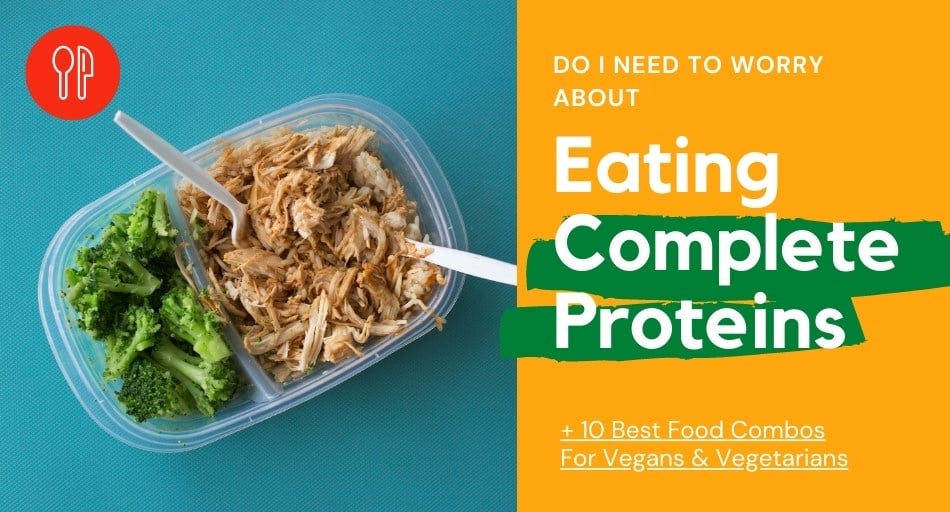
On the bright side, there are many ways individuals on plant-based diets can get enough protein but also complete proteins that contain all nine essential amino acids.
Some people following these diets worry that they have to get complete proteins each day and with every meal.
But is that true? Aren’t just high-protein, plant-based foods enough?
Regardless of whether you follow a plant-based diet or not, you don’t have to worry about taking in complete proteins with each meal. While these are important for your health, most individuals eating balanced meals get enough complete proteins each day.
The best way to go about it is to get all the essential amino acids throughout a 24-hour period. That way, you’re creating complete proteins without eating only complete proteins.
Table of Contents
Can vegans and vegetarians get complete proteins?
Most vegans and vegetarians can create complete proteins in their meals by mixing specific foods.
This allows you to consume all nine essential amino acids in one sitting, which creates a complete protein profile.
There are many plant-based foods that contain the missing nine amino acids that your body cannot produce.
You just have to mix and match them to create a complete protein profile, which isn’t too hard.
Luckily, there are some natural plant-based foods that are considered complete proteins. These include:
- Quinoa: This grain is not only a complete protein, but it also provides you with a great dose of vitamin B12, iron, magnesium, manganese, and copper.
- Tofu, tempeh, and edamame: Made from soy, these three contain a lot of calcium, potassium, and iron. So, you can get a lot of minerals from eating these plant-based products.
- Buckwheat: This whole grain is a great source of complete protein but also magnesium, phosphorus, copper, and manganese. It’s also lower in calories than tofu and quinoa.
- Ezekiel bread: It’s made with sprouted whole grains and legumes, so it contains a great balance of all nine essential amino acids. It also contains a lot of soluble fiber, folate, and vitamin C.
Other plant-based complete protein sources include spirulina, hemp seeds, chia seeds, and nutritional yeast, but these are much lower in protein.
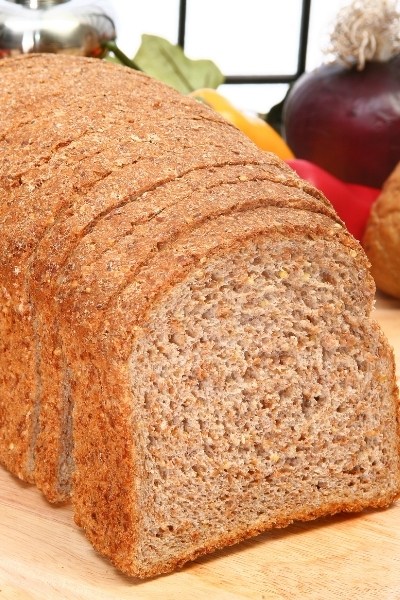
There are also many vegan and vegetarian protein powders that you can buy to up your intake of protein.
These are often made with all nine essential amino acids, reducing your need to worry about getting enough complete proteins each day.
Still, as you can see, if you get enough protein from your diet and include these foods, you’re bound to get enough of each amino acid every day.
What does protein do for you?
Protein is one of three crucial nutrients for your health: carbohydrates, fats, and protein. This nutrient has various jobs in your body, all of which are incredibly important.
Firstly, protein is essential for the health of your muscles. It makes up your hair, nails, and bones as well, so these can’t function without this nutrient.
Eating enough protein can also contribute to healthy weight loss. This is because this nutrient prevents overeating, helping you stay full and curbing your appetite. As a result, you’re less likely to take in too many calories in one sitting.
Protein also improves exercise performance, which is important for athletes and everyone who regularly works out.
This nutrient fuels your muscles and speeds up muscle recovery along with other minerals.
Because of that, if you want to stay in good physical shape, it’s important to get enough protein each day.
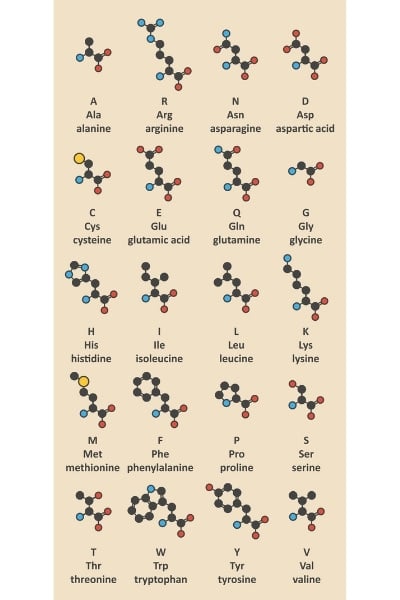
A healthy adult should get anywhere between 24 to 56 g of protein, depending on your physical activity levels and body weight.
So, while this might be hard to do on a plant-based diet, there are many ways to incorporate these foods into your dietary plan, including complete protein.
When it comes to complete proteins, it’s very similar. A complete protein is a protein that contains all nine essential amino acids that your body isn’t capable of producing on its own.
Your body needs all 20 amino acids, but it can only produce 11 out of these. So, you have to get the rest from your diet for the best health outcomes.
Most complete protein sources come from animal products like dairy, poultry, meat, fish, and seafood. So, if you’re a vegan, you can’t consume these.
Luckily, there are various ways to combine plant-based foods to create complete proteins that help you stay healthy without eating meat or taking any supplements.
10 Best Food Combos For Vegans & Vegetarians
1. Peanut butter sandwiches
A simple, whole protein food pairing for vegans is a peanut butter sandwich. Peanuts make up for the low lysine content in whole-wheat and whole-grain bread, providing you with all nine essential amino acids when you eat these two together.
What’s more, peanut butter is rich in healthy fats that have been known to keep you full, prevent overeating, and improve the health of your health.
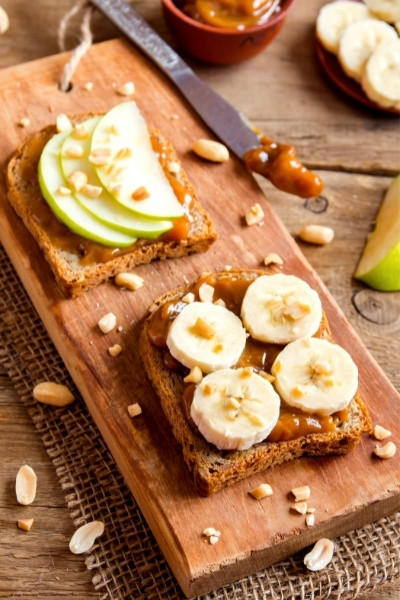
Peanut butter is also rich in protein on its own, but the actual content may vary depending on the brand you choose to buy.
2. Rice and beans
Both white and brown rice are low in lysine, which beans are high in. In turn, rice is high in methionine, which beans are low in.
So, when you eat them together, you’re creating a complete protein profile.
Beans, especially black ones, are rich in zinc, iron, folate, and thiamin, which vegans and vegetarians might be deficient in. So aside from protein, this meal can fulfill your need for these nutrients.
Eating rice, especially the brown kind, can help you load up on a lot of fiber. This nutrient helps you feel full, especially if you don’t eat meat. It can help you lose or maintain a healthy weight.
What’s more, you can eat rice and beans topped with guacamole and roasted veggies, which both add a lot more amino acids and various nutrients, including lots of fiber and antioxidants.
3. Pasta and peas
Just like other whole grains, pasta is very low in lysine. But peas are high in this amino acid.
So, together, these two create a complete protein profile with all nine essential amino acids.
Here, it’s best to choose whole-grain or whole-wheat pasta to get the best results. This is because plain, white pasta is stripped of a lot of nutrients, including important vitamins and minerals.
All types of peas are a rich source of various vitamins and minerals. So, you can choose different kinds for added flavor and color to create appetizing and healthy meals.
If you want to eat as healthy as possible, especially on a plant-based diet, make sure to choose nutritious alternatives to all grains.
4. Noodles with peanuts
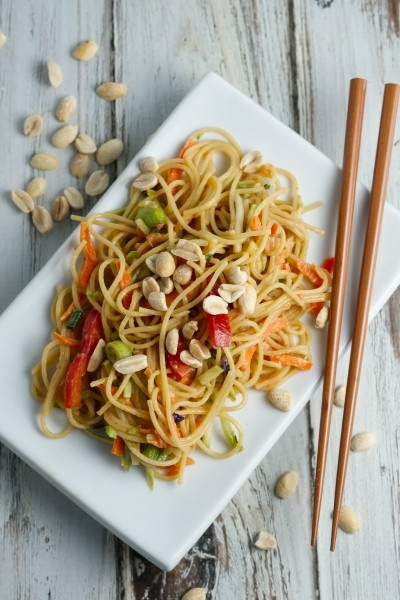
Like in the case of pasta and peas, these two complement each other, creating a wonderfully healthy amino acid profile.
Noodles, especially if you choose whole-wheat or whole-grain varieties, provide you with a lot of fiber that helps keep your digestive system healthy.
Peanuts, on the other hand, are an excellent source of various healthy fats, which contribute to heart and cardiovascular health.
Aside from that, peanuts provide you with a great dose of niacin, magnesium, manganese, and magnesium.
So, since mineral deficiencies can be common in vegans, it might be a good idea to add these to your diet.
5. Hummus and whole-grain pitas
Hummus is made with chickpeas, tahini, lemon, and spices. So, when you mix it with the amino acids found in a pita, you can easily create a delicious complete protein.
Alternatively, you can eat hummus with other whole grains, like whole-wheat bread. These also contain the same amino acids, so they pair well with hummus.
But pita bread might provide the best flavor when eaten with hummus.
Hummus is also rich in vitamin C, vitamin B6, manganese, and phosphorus, so eating it can help you load up on these nutrients.
The last two micronutrients are important for bone health, so getting enough of them can help prevent bone fractures and osteoporosis.
6. Fried rice with peas
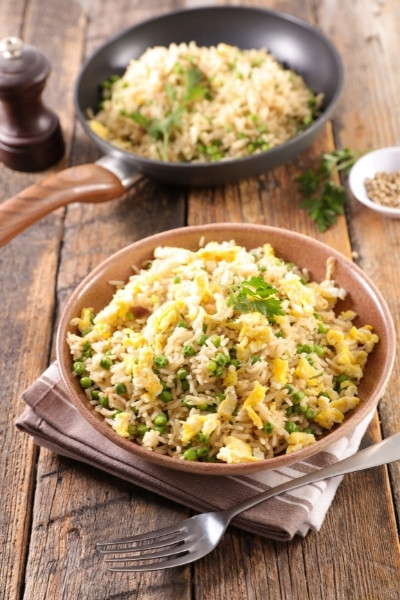
As a general rule, you can pair any grain with seeds and legumes, thus creating a complete protein. So, the same goes for rice and peas.
The best way to go is to choose brown rice, as it’s much higher in fiber and other nutrients than white rice.
When it comes to peas, the choice is yours as they all contain the same amino acids.
What’s more, just half a cup of canned green peas contains a lot of vitamin K, manganese, and folate, so you can get a lot of health benefits from these micronutrients.
7. Almonds and pistachios
Together, these two nuts create a complete protein profile, as their amino acid contents complement each other.
Eating nuts is not only great for their protein source, but they also contain healthy fats that are good for your health, digestive system, and nervous system.
Pistachios and almonds also provide you with a great dose of various minerals, preventing mineral deficiencies.
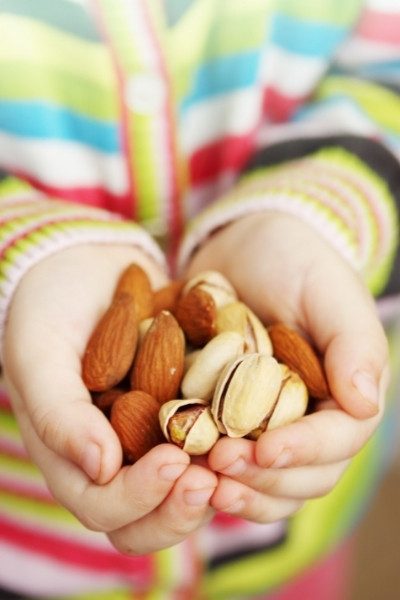
This complete protein pairing is easy to make since you can simply snack on these two nuts and get the most out of the protein they contain.
8. Rice, spinach, and avocado
This dish can be easy to mix along with other ingredients. You can simply cook up some rice (whether boiled or stir-fried), add some spinach and avocado, and enjoy your meal.
You can also switch between avocado and spinach, as they provide the same amount of the missing amino acid in rice.
If you don’t like any of these, you can try rice with nuts, seeds, or other legumes instead.
Whatever mixes well and contains the missing amino acid is a great choice for you.
Aside from that, spinach is a great source of fiber, vitamin A, vitamin K, iron, magnesium, and manganese. So, it’s an important addition to any diet.
9. Bean soup and crackers
Another alternative to eating beans with rice can be making bean soup and eating it with dipped crackers or even pita bread.
You can buy store-bought bean soup or make it yourself, which increases the number of nutrients you will take in.
This is important as all types of beans are high in almost all the minerals that your body needs.
When making bean soup, though, remember not to add too much salt, as it can raise your blood pressure, leading to an increased risk of strokes and cardiovascular conditions.
10. Lentils and almonds
Eating lentils and almonds together – or within a 24-hour period – can help you get all the nine essential amino acids from your diet that your body doesn’t produce on its own.
While you might wonder how to eat lentils and almonds together, it’s actually very easy. For example, you can add these to rice or whole grains like quinoa or whole-wheat pasta. Almonds can be used as toppings and lentils as a source of protein.
Lentils are also rich in folate, manganese, iron, and phosphorus, which are all essential nutrients for your overall health.
So, eating lentils can help vegans and vegetarians avoid taking supplements.
Conclusion
There’s no need to worry about consuming complete proteins with every single meal. But aim at having all nine essential amino acids in each 24-hour window. That way, you can ensure that your body is getting what it needs.
While it might be definitely harder to get enough complete proteins when you’re following a plant-based diet, there are many ways to do that, just like the ones above.
Also, don’t hesitate to experiment and create your own food pairings that fit your preferences.
At the end of the day, it’s not crucial to eat complete proteins with each meal. But it’s important to get all nine essential amino acids each day within a 24-hour period.
That way, the foods you consume are digested together and provide you with all the nutrients you need.
Sources: Nutrition Data and PMC
